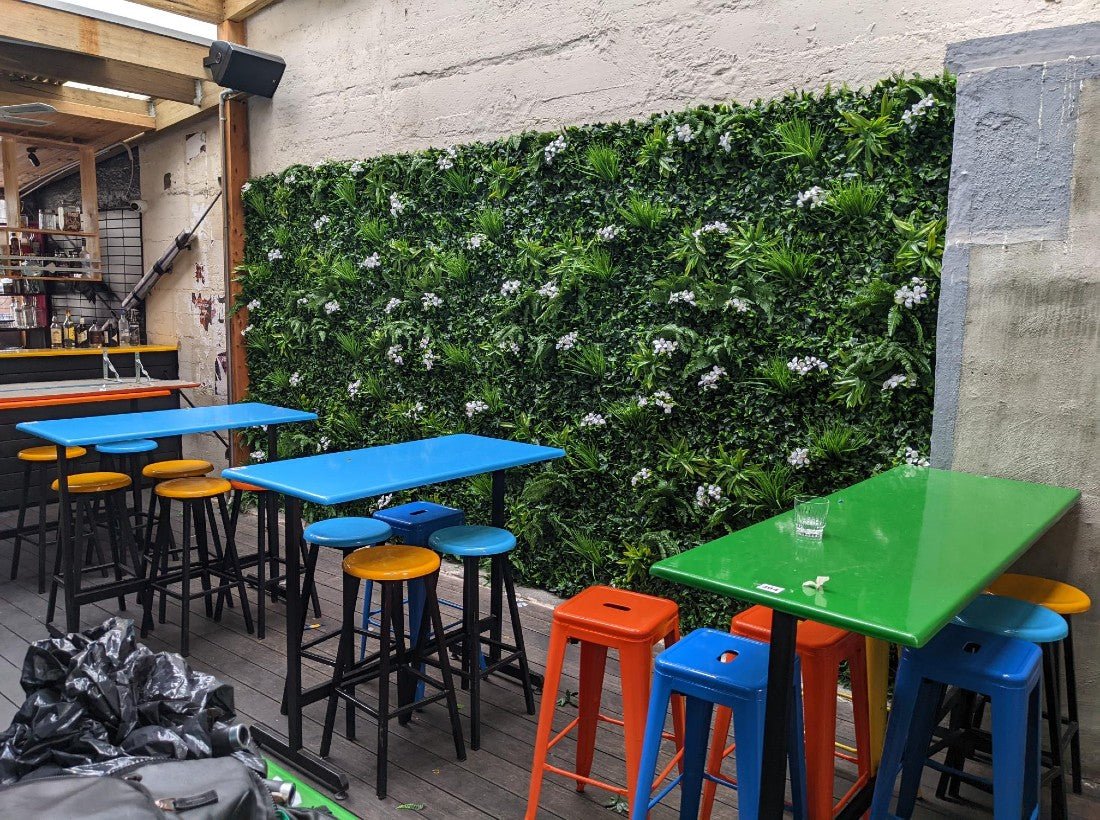So you shelled out a good amount of cash for a dazzling, high-quality artificial plant. Then, you remember that one of the reasons why you switched to faux was because you were sick of dealing with annoying insects. But you didn’t ask the pressing question - do artificial plants attract bugs too?
Forget everything you thought you knew about the great bug-plant conspiracy because we’re about to separate fact from fiction. We’ll help you navigate the landscape of misconceptions and provide you with enough knowledge to keep tiny intruders at bay.
Ready to set the record straight?
Let’s dig in.
Do Artificial Plants Attract Insects?

The short answer is no. Artificial plants don’t attract insects.
But before you let out a sigh of relief, there’s a bit more to the story.
We know this isn’t the answer you were looking for. But hey, you came here for some honesty, right?
So why isn’t there a cut-and-dry response?
While faux plants aren’t an inherent bug tantalizer, they aren’t immune to the occasional encounter. Unlike their living counterparts, artificial plants lack the essential components that make plants enticing. And since faux plants don’t have these features, bugs don’t have a reason to flock toward them.
But since fake greenery resembles the real thing, it can fool some feeble-minded bugs. So, just because the leaves are plastic doesn’t guarantee an insect-free zone. Bugs may find their way onto your fauxliege through other means.
For example, if your fake plant sits near an open window, some insects can wander in and perch on the leaves. But, this isn’t a deliberate action as it’s more by chance.
Or, if your space is already a bug hub, they can stumble onto your artificial plants in search of alternative food sources or hiding spots. In such cases, insects aren’t drawn to the artificial plants themselves but are simply exploring their surroundings.
Just like how bugs love the corners underneath your desk or the crevices behind your picture frame, they get the same sense of security when nestling under your faux plant’s leaves.
How to Keep Faux Plants Bug-Free?

Since bugs aren’t drawn to fauxliege, there are actions you can take to rid yourself of any crawling nuisances. In most cases, this only requires some simple maintenance.
Here are a few types to help you preserve a bug-free environment:
- Regular cleaning: Dust and debris can accumulate on the leaves of artificial plants and create the perfect home for bugs. So, wipe down the leaves and stems regularly with a soft cloth or a feather duster to remove buildup.
- Blow away debris: If your faux plant has some winding stems, use a vacuum cleaner or a blow dryer to remove loose debris that might be attracting insects and dimming your plant’s shine.
- Check the nooks and crannies: Inspect your faux plants and discover hidden crevices that attract dust and dirt. Pay special attention to the areas where the leaves meet the stem, as these are often beloved hiding spots.
- Don’t place them near open windows: You can minimize the chance of bugs finding their way onto your fake plants by placing them far from open windows and doors. Of course, this is only possible with small, portable plants.
- Store fake plants properly: If you need to store your artificial plants for an extended period, ensure they’re clean and free of any bug food sources. To do this, cover your fauxliege with a bag to keep it protected while in storage.
- Don’t spray bug repellent: Abrasive chemicals can be as harmful to your fauxliege as they are to the insects. Instead of spraying repellent, place citronella candles or essential oil diffusers in the room to deter insects from buzzing around.
By following these tips and tricks, you’ll remove the appeal of hiding spots and the bugs will just crawl (or fly) away.
How Often Should You Clean Fake Plants

Although artificial greenery is much more low-maintenance than natural plants, it still needs a good clean. The frequency of cleaning depends on the environment and the amount of debris that has already accumulated.
We’ve already written a detailed tutorial on cleaning and maintaining faux greenery, but here’s the key information:
- You should clean your fauxliege on an as-needed basis, just as the leaves start losing their shine.
- Outdoor fauxliege needs more frequent cleaning (at least once a month) due to being exposed to the elements.
- Fake greenery in high-traffic areas will quickly build up dust and debris, so you’ll need to clean it more often.
- Don’t treat plastic and silk plants the same, they need different cleaning approaches.
Why Do Real Plants Attract Bugs?

Since bugs aren’t attracted to the physical appearance of greenery (hence why they largely ignore artificial plants), why do they like real plants?
Greenery attracts insects for several reasons, most of which are related to the needs of the bugs themselves, such as:
- Food source: Many insects live off the nectar and pollen produced by flowers.
- Shelter and protection: Leaves provide insects protection from predators and harsh environmental conditions and are perfect hiding places and nesting sites.
- Reproduction: Some plants provide suitable conditions for an insect’s reproductive cycle.
- Scent and visual cues: Greenery emits scents and comes in vibrant colors that attract insects and act as a signal that there’s a potential food source nearby.
- Chemical signaling: Plants release chemical compounds (pheromones) which attract specific pollinators.
- Decomposition: Insects love decaying plant matter like fallen leaves or rotting wood as it provides nutrients and organic material for food.
Closing Thoughts
As much as we love real plants, we must admit they’re a handful at times. Since their existence is crucial for bugs, it makes them the perfect home for an infestation.
Since artificial plants don’t have the same insect-bewitching features, they’re as close to a bug-free alternative as you can get. All they need is a good clean once in a while to ensure no creepy crawlies have made it a home.


